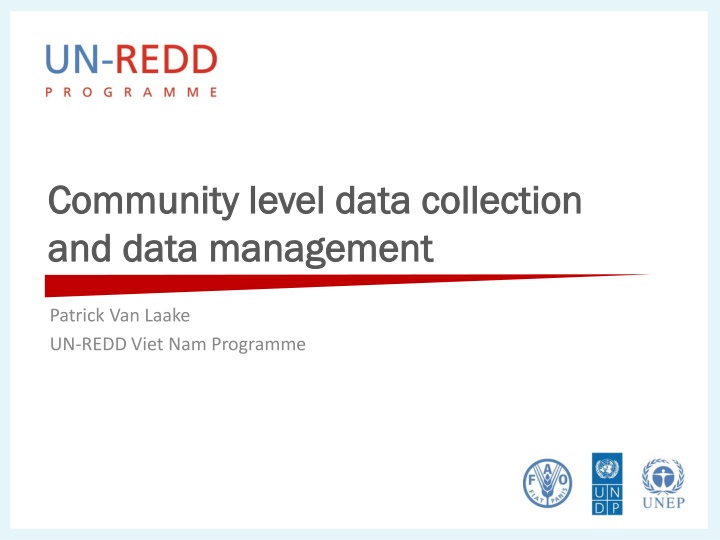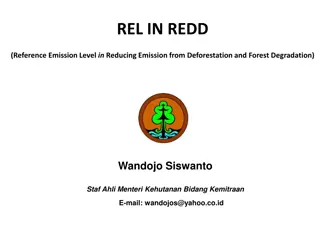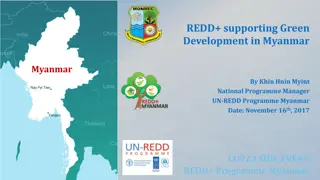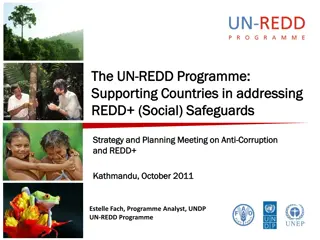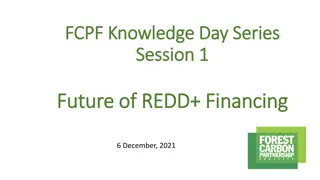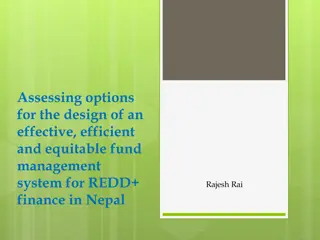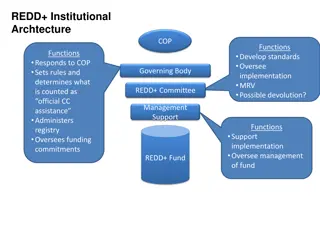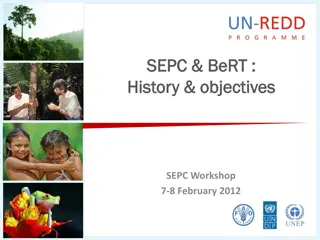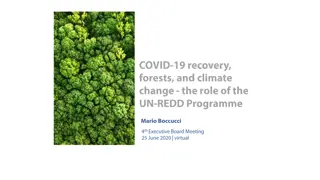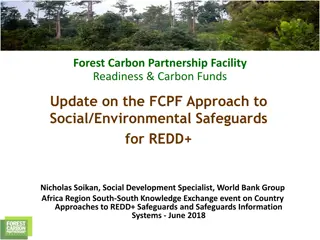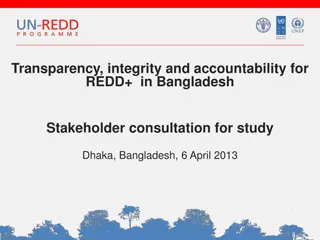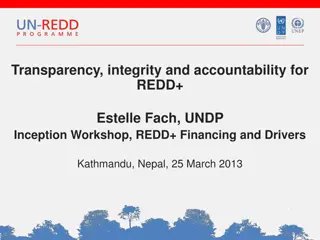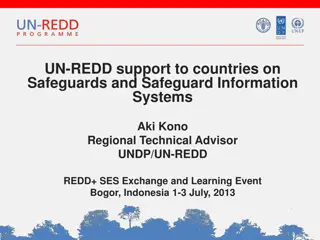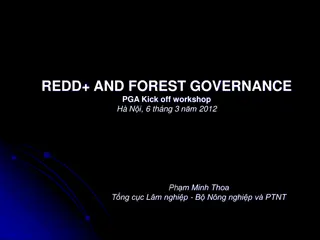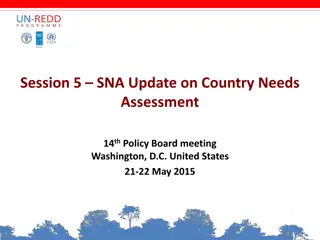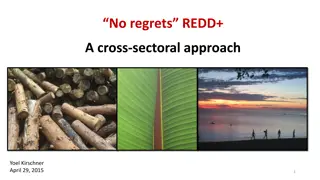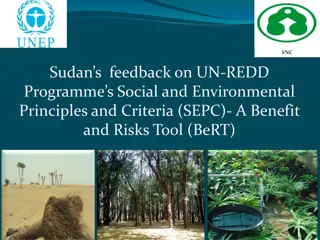Community-Based Data Collection and Forest Management for REDD+ Initiatives
Participatory approaches in forest management by local communities have shown success in conservation efforts. Ownership, long-term commitment, and social pressures play key roles. Additionally, secondary uses of the forest, carbon assessment by communities, supplementary data collection, and efficient data collection procedures are crucial aspects highlighted for successful REDD+ implementation. The involvement of organized community groups, supported by NGOs, in data collection and forest management activities can lead to sustainable outcomes.
Download Presentation

Please find below an Image/Link to download the presentation.
The content on the website is provided AS IS for your information and personal use only. It may not be sold, licensed, or shared on other websites without obtaining consent from the author.If you encounter any issues during the download, it is possible that the publisher has removed the file from their server.
You are allowed to download the files provided on this website for personal or commercial use, subject to the condition that they are used lawfully. All files are the property of their respective owners.
The content on the website is provided AS IS for your information and personal use only. It may not be sold, licensed, or shared on other websites without obtaining consent from the author.
E N D
Presentation Transcript
Community level data collection Community level data collection and data management and data management Patrick Van Laake UN-REDD Viet Nam Programme
Participatory Carbon Forestry The management of local forest resources by organized community groups has proven to be very successful Ownership Long-term commitment Social / Cultural pressure to protect the forest
Secondary uses of the forest Many communities rely on the forest for sustenance or livelihood Such uses may be combined with REDD+ They may be complimentary non- durable goods such as fruits, herbs, leaves They can increase the productivity of the forest higher total income from the forest Together they can be a viable alternative for deforestation or forest degradation
Carbon assessment by communities With very little training and support, communities can accurately assess basic parameters of the forest Tree count Species identification DBH measurement Cost of assessment is between $1 ~ $4 per hectare per year Potential for collecting large volumes of data 4
Supplementary data The data that the communities collect is relatively basic Supplementary services and data collection by a professional party can increase accuracy Stratification of the forest, determination of number and location of sampling plots Wood density, free branch height, total tree height Development of allometric equations Large-scale data collection opens up opportunities for statistical analysis and filtering of data
Data collection procedures Communities do not need much training to collect data Plot and data management requires support Support can be provided by NGOs that serve multiple communities Equipment to support data collection is ever more accessible and affordable: GPS, PDA, smart phone NGOs can help share knowledge and equipment between communities 6
Data to be collected Typical data are: Diameter at breast height Tree count Tree species Data should be collected in sampling plots to which the local community already has access Provide labour in return for benefits money, use of forest resources This depends very much on land use rights, economic opportunity, etc Data can be collected on a regular basis It is preferable to do so more often than strictly required Create awareness, maintain involvement and experience Extra data can be used for quality control Other data should be collected as well Use of the forest resources by the local population Substitution of non-renewable resources by forest products Ownership, use rights, cultural and social importance
Managing data The volume of data that will be collected on a national scale is likely to be enormous Can be millions of samples per year for Viet Nam MARD needs to set up professional computer and internet infrastructure to manage the data Specially trained and dedicated staff will be necessary to operate the data management system Unless the data management system is properly designed, analysis, quality assurance and reporting will be very difficult or impossible UNFCCC will likely have stringent reporting guidelines and validation may require reviewing of raw data
Data delivery Data will come from everywhere Paper records Process in a field office and send through internet Field data computers Upload through internet from field office Smart phones Direct upload in standard format Standard forest inventory This will be non-standard data that has to be dealt with in a special way Different stakeholders will use different data delivery methods
Data analysis The data that is being delivered from the field needs to be processed in order to be useful This requires a very professional design of the data management system Data analysis is a continuous process Process data as it is received Do not accumulate data until a report to the UNFCCC is due! In Viet Nam data analysis can be in stages Data quality control at the district level Provincial level to analyze performance National level for reporting and benefit distribution
Data quality assurance Data has to be checked for consistency over time and spatially Remove measurement or reporting errors Check if there are consistent errors from a location Is the stratification wrong? Does the community receive support or training? Data are grouped in large homogeneous units for reporting Multiple measurements give indication of variability and accuracy of the measurement If the accuracy is too low: Refine the stratification Add more measurements Improve quality of measurements Data coming from communities may be of low quality (completeness) but there is a lot of it, making data quality assurance possible
Access to data Even if all the data is uploaded to a national database, access should be given to third parties to support their efforts Provincial Forest sub-Department at DARD Planning Evaluation of performance Distribution of benefits Forest Protection Department Planning of activities Support for communities Communities Overview of performance Insight in benefits Society at large Overview of achievements Access can be provided through a web site or with brochures, newsletters, etc
